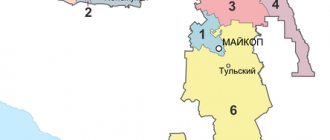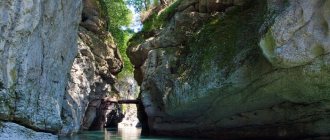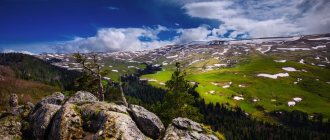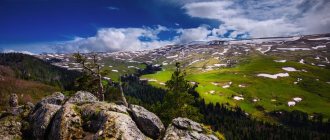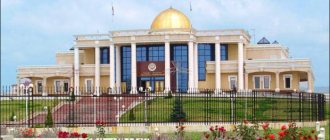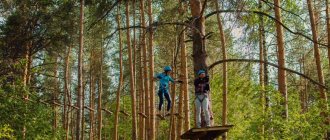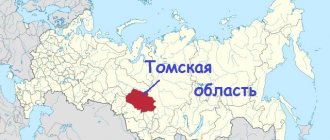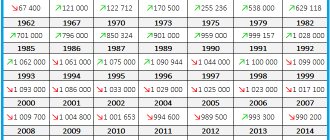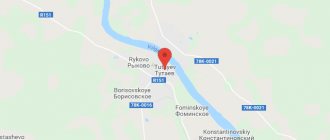1 region on cars means that the vehicle is registered in the Republic of Adygea. The founding date is considered to be July 27, 1922 . The subject was located on the basis of the Maikop and Ekaterinodar departments of the Kuban-Black Sea region.
Stages of formation of the region:
| 07/27/1922 | Adygea (Cherkessia) Autonomous Region |
| August 1928 | Adyghe Autonomous Region |
| 07/03/1991 | Republic of Adygea |
Federal District
The region's territory is part of the Southern Federal District , which also includes:
| № | The subject of the Russian Federation |
| 1. | Republic of Adygea |
| 2. | Astrakhan region |
| 3. | Volgograd region |
| 4. | Republic of Kalmykia |
| 5. | Krasnodar region |
| 6. | Rostov region |
| 7. | Republic of Crimea |
| 8. | City of Sevastopol |
Yandex.MapsSouthern Federal District — Yandex.Maps
Basic information
Home/About the Republic/Basic information
- Basic information
- Symbolism
- Population
- Administrative division
- Basic information
- Economy
- Education and science
- Social protection
- Agriculture
- Tourism
- Infrastructure and housing and communal services
- Sport
The Republic of Adygea is located in the central part of the North-West Caucasus, in the basins of the Kuban, Laba and Belaya rivers. The geographical location of Adygea is very convenient. It provides favorable conditions for its economic development. Railways and highways connect the Republic of Adygea with many regions of the Krasnodar Territory, the Russian Federation and neighboring republics. The climate of the Republic of Adygea is moderately warm, with precipitation 540 - 860 mm. in year.
Date of formation
The Adyghe Autonomous Region was formed on July 27, 1922 by a resolution of the Presidium of the All-Russian Central Executive Committee by separating the Kuban-Black Sea region from the Krasnodar and Maikop departments. On June 28, 1991, at the V session of the regional Council of People's Deputies, the Declaration of State Sovereignty of the Soviet Socialist Republic of Adygea was adopted. The Law of the Russian Federation of July 3, 1991 formalized the transformation of the Adygea Autonomous Region into the Soviet Socialist Republic within the RSFSR
Nature
The Republic of Adygea is located in the southwest of the Russian Federation, on the left bank of the Kuban, occupies the central part of the Kuban inclined (Zakubanskaya) plain and the northern slopes of the Northwestern Caucasus.
The main territory of the republic is located in the basin of the two main tributaries of the Kuban - Laba and Belaya and lies between parallels 44° and 45° N, the 45th parallel crosses the Krasnodar reservoir and the northern part of the Kuban plain, the 44th passes through mountainous areas near the lake . Psenodakh and village. Guzeripl, the 40th meridian almost in the middle crosses the republic from north to south, passing through the central part of the Lagonaki Highlands, just west of Maykop and st. Giaginskaya.
Adygea borders on the Krasnoarmeysky, Dinsky, Ust-Labinsky, Kurganinsky districts of the Krasnodar Territory and the city of Krasnodar - in the north, on the Adlersky, Lazarevsky, Khostinsky districts of Greater Sochi - in the south, on the Apsheronsky, Belorechensky, Seversky districts and on the territory subordinate to the administration of the city. Goryachy Klyuch - in the west and Mostovsky, Labinsky and Kurganinsky districts - in the east. The area of Adygea is 7790 sq. km, the length of the borders is 900 km, the length of the territory of the republic from north to south is 208 km, from west to east – 165 km, 441.2 thousand people live in it. The republic includes 7 administrative districts: Giaginsky, Koshekhablsky, Shovgenovsky, Krasnogvardeysky, Maikopsky, Takhtamukaysky, Teuchezhsky. Adygea is part of the Southern Federal District. The position of Adygea in the south of Russia, in the foothills and mountains of the Caucasus, in the interfluves of large rivers, is favorable for the development of the territory and convenient for connections with its neighbors.
Climate
The climate of the Republic of Adygea is moderately warm and mild. The nature of atmospheric circulation has a great influence on the formation of the climate of the region. An important climatic and recreational characteristic of the area is the duration of sunshine. In general, there are from 200 to 250 clear days a year in the republic; total solar radiation is 115 - 120 kcal/sq.cm.
To a large extent, the climate of Adygea is determined by the peculiarities of the geographical location of the republic, first of all, the proximity of the ice-free Black Sea, the latitude of the area, the height and distribution of the mountain ranges of the North-West Caucasus. The Black Sea is a good “accumulator” of heat, accumulating it in the summer and gradually releasing it to the surrounding areas in the winter. At the same time, it is a source of formation of the so-called Black Sea cyclones, carrying moisture to coastal areas. In turn, the Caucasus Mountains retain the humid winds of the western components and contribute to sufficient moisture in the territory of the republic in the spring-summer period. Therefore, precipitation in Adygea is twice as much as, for example, in the northern steppe zone of the Krasnodar Territory. The number of days with precipitation in a whole year is 115 - 150. There are 200 - 210 warm days in a year.
Precipitation across the territory of the republic is very uneven, especially in the foothill-mountain zone. In general, their number increases with height. However, the distribution of precipitation is greatly influenced by the orography of the area. Thus, the northern ledge of the Lagonaki Highlands is a kind of “orographic screen”, in front of which the amount of precipitation increases sharply. The highest average annual precipitation (2744 mm) was recorded at the Belorechensky Pass.
The wind regime of the territory is also subject to the orography of the area. So, if in Art. Dakhovskaya is dominated by winds of the northern and southeastern directions, then in the river valley located. Beloy village Guzeripl - northern, northeastern, southern and southwestern directions. Wind speeds in the area are relatively low. The highest storm winds are observed mainly in winter and are associated exclusively with the passage of atmospheric fronts. A characteristic feature of the wind regime of the mountain and foothill zones is the presence of mountain-valley winds.
Despite the small extent of the territory of Adygea from north to south (about 200 km), the climate of the republic is very diverse. In its northern lowland part the climate is temperate continental, in the foothills it is warm and humid, and in the southern part there is a cold highland climate.
In general, the climatic resources of Adygea are favorable for agriculture, industrial development, transport and recreation. Climatic features are best traced by the seasons of the year.
Winter in the republic has little snow, moderately cold, and mild. In rare years it starts right away. Usually there is a more or less long pre-winter period. During this period of time there is a constant change of cold and thaw with the complete melting of snow. On average, winter in Adygea begins at the end of November, when the air temperature drops to -5°C. The coldest winter month is January. Its average long-term temperature ranges from -2.0°C in the plains to -4.4°C in the foothills. In winter, significant cold snaps are common, when the minimum air temperature drops to -20 - 25°C. In this case, the absolute minimum can reach -30 - 35°C. In the middle of winter, sharp thaws are possible with temperatures reaching +5, +10°C and causing snow melting, ice break-up and river flooding. Often these thaws are associated with a warm, dry wind - a foehn.
The height of the snow cover on the flat part is small - 6 - 10 cm, in the foothills and mountains it ranges from 50 cm to 2 - 5 m. The maximum snow height (6.1 m) was recorded in the Fishta mountain group. Soil freezing on the flat part of the territory of Adygea does not exceed 15 - 30 cm.
Spring is usually associated with the weakening of the Asian baric maximum and the retreat of its western spur to the east. As a result, Mediterranean cyclones are able to move towards the east and northeast. The associated removal of warm air masses from the south and southwest contributes to a rapid increase in air temperature, thawing and warming of the soil. A distinctive feature of the spring circulation in Adygea is the high variability of atmospheric processes and the rapid change of air masses.
Spring comes early on the plain (according to long-term averages, at the end of February - the first ten days of March), and in the mountains at an altitude of 2000 m - at the end of March and later. By the beginning of March, the snow completely melts from the fields, and complete thawing of the soil is observed already in February. The increase in heat in spring is usually rapid. Already 15 days after the beginning of spring - during March, the air temperature passes through +5°C, and on April 10 - 20 - through +10°C. By this time the frosts have stopped.
In summer, the circulation of air masses is significantly weakened. The weather is mainly formed due to the transformation of air masses into slowly moving anticyclones in the Azores and Arctic, which is greatly facilitated by the large influx of solar radiation. Summer in Adygea lasts on average about 140 days. On the flat part of the republic it occurs in the first half of May, in the foothills - 10 - 15 days later, and in the mountains up to an altitude of 1700 - 1800 m above sea level - in the first half of June. The average monthly air temperature in the warmest month of the year, July, is +23.2°C on the plain, and +20, + 22°C in the foothills. Summer on the plain is hot and dry, in the foothills it is much cooler. In the higher mountains, a stable transition of air temperature above + 10°C is not observed.
Summer precipitation is predominantly rainfall. In total, during the warm period, from 300 to 400 mm falls on the flat territory of Adygea. In the foothills, the amount of precipitation during this period increases to 500 - 550 mm, and in the mountains to 800 - 1000 mm.
Autumn on the flat territory of Adygea begins in late September - early October, in the foothills 10 - 15 days earlier. The beginning of autumn is characterized by consistently warm, dry and sunny weather (“Indian summer”). In the second half of October, the air temperature goes through 10°C towards a further decrease, the active growing season of agricultural crops ends, and the first frosts are observed. The rains become continuous and continuous. In mid-November, there is a steady transition of air temperature through -5°C, and the growing season of agricultural crops stops completely.
Animal world
The rich and varied vegetation of the plain, forest-steppe and mountain forest zones, alpine meadows, the proximity of the Black Sea, combined with the favorable climate of the region, predetermine the amazing diversity of the animal world of Adygea. In a relatively small area located at the junction of two zoogeographical subregions, Tibetan, Kazakhstani, South Asian, Holarctic, and European faunas are represented, while a significant number of endemic species and subspecies indicate the great antiquity of the animal population, primarily in the river basin. White.
In total, the republic has 87 species of mammals, 91 fish, 275 birds, 11 amphibians, 19 reptiles and several thousand species of invertebrate animals. The distribution of the animal population, as well as the vegetation cover, clearly shows a zonal character. Each altitudinal zone is characterized by a certain complex of animals. Of all the altitudinal zones, the forest-steppe zone is the most diverse in terms of animal population. Both with the ascent to the mountains and with the transition to the Cis-Caucasian Plain, the number of animal species noticeably decreases.
The fauna of the forest-steppe zone in the Teuchezhsky and Shovgenovsky districts of the republic does not have endemic species. Common and widespread here are the field and yellow-throated mice, the Caucasian mole, the common shrew, and there are also brown hare and fox. In the spring and summer, you can find many birds of prey here, feeding on rodents and insectivores. The original inhabitants of the steppe - the bustard and little bustard - have been practically exterminated as a result of economic activity. Elks occasionally come here, and in 1997 wild boars often visited the Shovgenovsky reserve. Waterbirds are found in large numbers in river valleys.
The forest areas of the lower and middle mountain belts are characterized by Caucasian subspecies of animals that live in the broad-leaved forests of Europe: bear, lynx, badger, otter, deer, forest cat. On rocky screes and near water bodies you can find rock and Caucasian lizards, common and water snakes, crested and Asia Minor newts, tree frogs, Caucasian crosses, etc. Birds are widely represented here: finches, warblers, warblers, thrushes, jays.
The fauna of the uppermost landscape zones is represented by a significant number of endemic species and subspecies. The Caucasian mouse, the Promethean vole, the Kuban tur, the Caucasian chamois, and the stone marten are common only in the Maykop region. Of the 30 high-mountain species of birds nesting here, the most typical are: Caucasian black grouse, snowcock, griffon vulture, vulture, bearded vulture, wall climber. The main attraction of the republic's fauna is the mountain bison. The forests of mountainous Adygea are inhabited by the Caucasian red deer, Caucasian tur, chamois, Caucasian brown bear, Caucasian species of otter, badger, lynx, wild cat, fox, pine and stone marten, etc.
Coat of arms of the republic
The appearance of the main symbol of the region, the coat of arms of the Republic of Adygea, has the following features : a circle with a light brown border, inside a semicircle in white letters on a black ribbon in two state languages (Russian and Adygea): “ Republic of Adygea ” and “ Adygea Republic ”. Between these inscriptions is a large light brown and white star , signifying the unity and brotherhood of the multinational composition of the region.
On the lower right along the edge green oak and maple leaves And at the bottom left, also along the edge, there are ears of corn. At the base are the symbols of the Russian Federation: “RF” , between the letters there is a bull’s head, talking about the golden treasures of the Maykop mound, and above it is the national table of the subject - ane with bread and salt .
Well, in the center of the coat of arms is the main character of the Nart epic Sauseryko with a flaming torch in his hand, riding a fiery horse soaring in the air above an eagle. This means that the republic is striving for progress . Behind it you can see the dawn - the sun and 12 rays emanating from it with twelve stars at the ends, symbolizing the 12 Adyghe tribes.
Infrastructure...
The infrastructure in Adygea is quite normal and developed. There are schools, kindergartens, shops and large shopping centers. Especially are the Mega Adygea shopping center where the famous IKEA is located https://mega.ru/adygeya/, Leroy Merlin https://krasnodar.leroymerlin.ru/shop/krasnodar-adygeya/, Decathlon https://www.decathlon. ru/ We often visit them ourselves))
By the way, the development of infrastructure near the Mega Adygea shopping center is constantly ongoing. In the near future there will be a lake with walking areas. Additional entertainment areas. Currently still under construction.
At the same time, there are many different trading enterprises and shops for every taste. Located along Turgenevskoye Highway. Finding a job in Adygea is also possible. Various projects are under construction and if you are a builder, you certainly won’t be left without work! In addition, as I wrote above, trade is developed. Which is also a good option for employment. Transport runs steadily to Krasnodar, minibuses - 2, 67, 95, 39, 61, 62, 7a. Also buses that go from different areas of Krasnodar to the Mega Adygea shopping center - 414, 444, 710, 7a.
Just 15 minutes by transport. Of course there are traffic jams across bridges. Especially during rush hour. The roads are not good everywhere. Laying asphalt in the residential areas of New Adygea and Yablonovsky is proceeding at a slow pace.
Parking near the Mega Adygea shopping center
Inside the Mega Adygea shopping center
Inside the Mega Adygea shopping center
Nationalities
More than 60% of the population is Russian, the rest are given in percentage terms in the table.
| Nationality | Share of population, % |
| Russians | 63,6 |
| Adyghe people | 25,2 |
| Armenians | 3,7 |
| Ukrainians | 1,4 |
| Kurds | 1,1 |
| Circassians | 0,6 |
| Other nationalities | 2,3 |
| Those who have not decided on nationality or have not provided information | 2,1 |
Results
In general, Adygea (Yablonovsky and New Adygea) is a worthy option. Considering if you need the Krasnodar center for work. Especially with a small budget for purchasing real estate. When there is not enough money for expensive areas of Krasnodar - YMR, FMR, CHMR, TsMR. As an alternative to Adygea, but in Krasnodar on a budget - Western bypass. This area of Krasnodar is actively developing. Good selection of residential complexes and apartment options for purchase. Schools, kindergartens and other infrastructure are also developing.
Residential complex Sports Village in the Western Bypass area in Krasnodar
Shopping center in the Western Bypass area in Krasnodar
Subscribe to our group of those who moved to Krasnodar on VKontakte - vk.com/clubsib23.
Did you like the article? Save it to your wall or share with friends on social media. networks:
Administrative division
The territory is administratively divided into 7 districts and 2 republican urban districts of republican significance (48 rural settlements and 3 urban settlements)
| Maykop Republican Urban District |
| Adyghe Republican Urban District |
| Giaginsky district |
| Koshekhablsky district |
| Krasnogvardeisky district |
| Maykop district |
| Takhtamukay district |
| Teuchezhsky district |
| Shovgenovsky district |
Myths and phenomena[edit]
Modern Adygea (through the eyes of non-Adygs) has already been described in the corresponding (forbidden) article on Lurka. The article is full of stereotypes and Petrosyan-style humor. It was written, as usual in Lurka, rudely, unpleasantly, without any political correctness, tolerance or other delicacy. Therefore, the reverent but vigilant Adyghe princesses from the philological department of Maikop University found it extremely offensive, and according to their complaint, it was banned in Russia by Roskomnadzor. However, the article is still available outside Russia and from non-Russian IP addresses.
Car license[edit]
Housing[edit]
Adyghe Unified State Exam[edit]
Transport
The transport infrastructure of the Republic of Adygea is most developed in the field of road, rail and pipeline.
Air
Maikop civil airport is primarily intended for passenger air transportation and mail and was registered as international 1997 Now air service operates with the capital of Russia, Moscow, and abroad.
Automotive
The following routes pass through the republic:
- A146 "Krasnodar - Verkhnebakansky";
- M4 "Don";
- R-217 "Caucasus".
Motor transport is important in the industry, as in other regions. But the geography of Adygea is such that a huge flow of cargo and passenger transportation falls on road transport. General paved roads stretch for more than 3 thousand kilometers.
Yandex.MapsA-146 — Yandex.Maps
Railway
The length of the republic's railways is 170 km . The very first line was built in 1947 from Krasnodar to Tuapse , which is of very great economic importance for the region. What is important for residents of Adygea is that they have the opportunity to go to the sea to improve their health.
Main branches:
- Novosibirsk – Krasnodar;
- Armavir – Tuapse;
- Belorechenskaya - Maikop - Kamennomostsky.
Connection with other regions:
- Rostov region;
- Krasnodar region;
- Stavropol Territory;
- other regions of the North Caucasus.
Rail freight transportation includes agricultural products, building materials, timber, oil, and wood processing industries.
Water
The republic has a river port.
Pipeline
This subject of the Russian Federation has another type of transport - pipeline. It delivers gaseous and liquid products. This highly specialized type of transport is very promising for the region.
Literature
- Dzhanashvili M. G. News of Georgian chronicles and historians about the North Caucasus and Russia: Sat. to describe the areas and tribes of the Caucasus. Tiflis, 1897;
- Kulakovsky Yu. Where the temple for the Avazgs was built by Emperor Justinian // Archaeological news and notes. M., 1898. T. 5. No. 2. P. 33-37;
- Prozritelev G.N. Ancient Christian monuments in the North Caucasus. Stavropol, 1906;
- Lavrov L.I. Pre-Islamic beliefs of the Adyghe and Kabardians: Research. and materials on issues of primitive religions. beliefs. M., 1959;
- Panesh E. Kh. Stages and nature of the spread of Christianity among the Circassians (V-XII centuries) // Problems of studying traditions in the culture of the peoples of the world. M., 1990. Issue. 1;
- Ageeva R. A. What kind of tribe are we?: Peoples of Russia: names and destinies: Dictionary-reference book. M., 2000. P. 26-30.
Attractions
Tourism here is intended for lovers of adrenaline and vivid impressions, as well as lovers of very beautiful wildlife. These are caves and turbulent rivers, peaks. You can fly a hang glider, ride a quad bike, or ride a horse through the gorges .
Some of the most popular attractions of the Republic of Adygea (and this is not the entire list):
- Khadzhokh Gorge of the Belaya River
- Lago-Naki
- Waterfalls of the Rufabgo River
- Savranskaya Ropeway
- Mysterious dolmens
- Rope adventure park "Tethys"
- St. Michael Athos Monastery
- Devil's finger rock
- Gorge and waterfalls of the Mishoko River
- Museum of Nature of the Caucasian Reserve
- Granite gorge of the Belaya River
- Lagonaki Highlands (Lago-Naki Plateau)
- Caves of the Lagonaki Highlands
- Fisht-Oshtensky mountain range
- Valley of the Ammonites
Read also:
Residential complexes and developers of Krasnodar, Moving to Krasnodar, Miscellaneous
Reviews and comments - one comment
- Answer
04.10.2021Denis Maslennikov
I don’t know who likes it, but we like Adygea. Over the past 5-7 years, Yablonovsky and New Adygea have developed and built up beyond recognition. And Krasnodar is very close, and the CENTER of Krasnodar. Therefore, everyone must decide and draw conclusions for themselves.
2
Let's go eat
Cheese is the main culinary brand of Adygea. The national cuisine is famous for dairy products, but it is even ahead of ayran in popularity. Soft Adyghe cheese is prepared according to a special recipe: it does not ripen, and during its production the milk protein is precipitated using whey. Thanks to this technology, the calorie content of the product is even lower than that of feta cheese, and it retains useful minerals and vitamins. The Adygs try to preserve the centuries-old traditions of cheese making; every year they organize a regional cheese festival . Farmers, entrepreneurs, and representatives of dairy production take part in it. Adyghe cheese goes well with herbs and vegetables; it is used in dumplings, national pies guubat and halyuzhi. The day of halyuzh - a pie with cheese filling - is celebrated in June; craftswomen from all regions of the republic take part in the holiday.
But the ancient traditions of winemaking in the region could not be preserved. Although ancient sources claimed that local wine tasted similar to Greek. But the rich vineyards first fell victim to the dry Muslim law, and later to the Caucasian War. During this destructive confrontation, orchards and vineyards were cut down en masse. Now Adyghe winemakers are not trying to compete with the Greeks, but they are still entering the regional market. The most popular low-alcohol drink in the republic is local beer. The first brewery appeared here in 1882, the business was started by invited Czech brewers. Apparently, this is why experts note a certain similarity between the Czech and Adyghe foamy drink.

